Unlocking Potential in School Settings with ABA Therapy
In recent years, Applied Behavior Analysis (ABA) has emerged as a groundbreaking, evidence-based approach that significantly enhances educational outcomes for children with autism. When effectively integrated into school environments, ABA therapy supports the development of essential skills, manages challenging behaviors, and fosters greater independence, creating a more inclusive and productive learning atmosphere. This article explores how ABA therapy is implemented in schools, its benefits, and the vital role of trained professionals in maximizing its effectiveness.
Effective Implementation of ABA in Classroom Settings
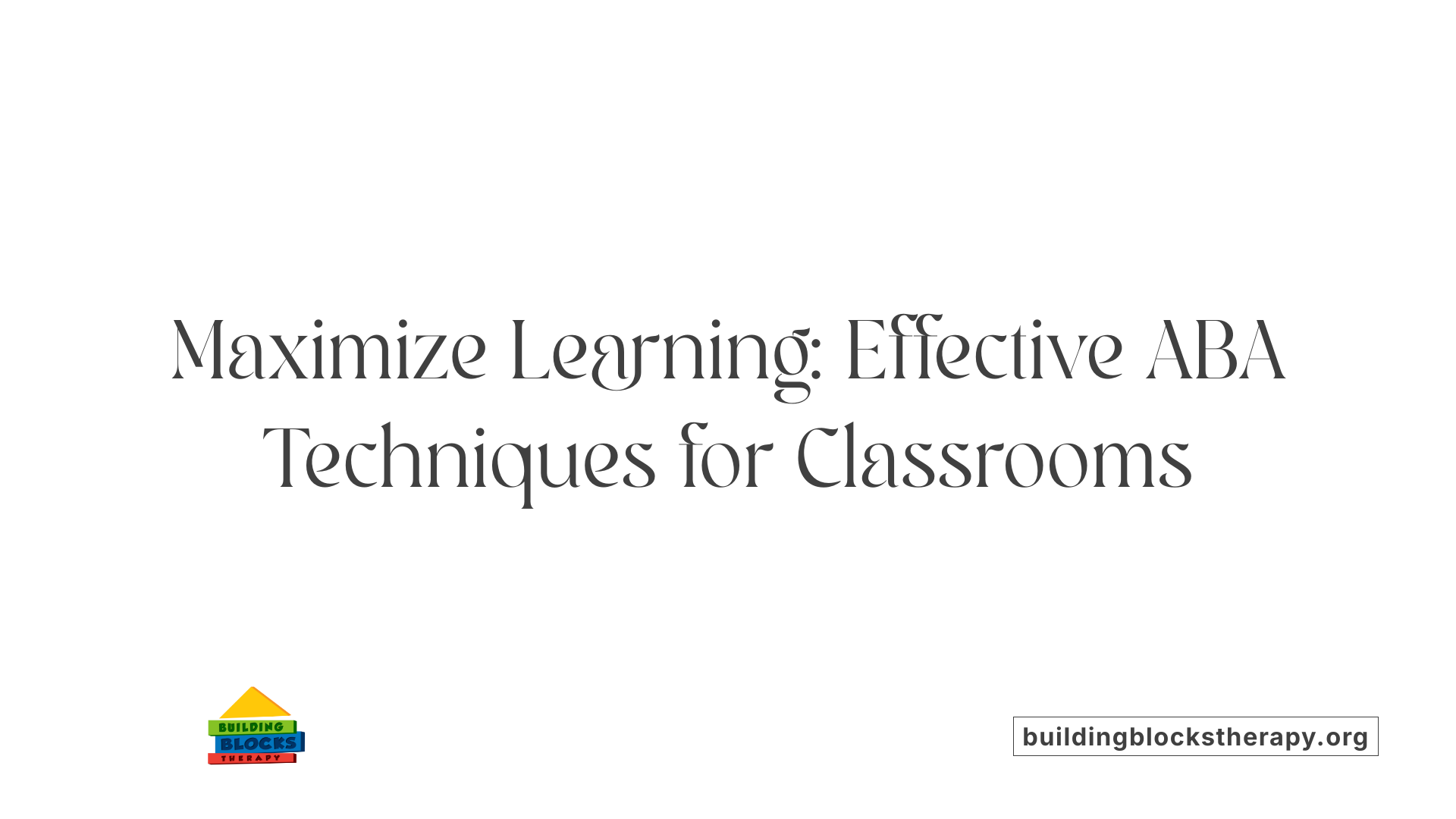
How can ABA be used effectively in the classroom?
Applying Applied Behavior Analysis (ABA) effectively in classroom environments involves a combination of strategic techniques tailored to each student’s needs. One foundational element is the use of positive reinforcement strategies, such as token systems, which reward students for engaging in desired behaviors. These tangible or social reinforcers motivate children and make learning activities more enjoyable.
Understanding what motivates each student—whether it’s verbal praise, access to preferred activities, or tangible rewards—helps in designing interventions that are meaningful. Conducting Functional Behavior Assessments (FBAs) allows educators and therapists to identify the reasons behind certain behaviors. This understanding guides the development of tailored strategies, including prompting, fading techniques, and environmental modifications that support the child's learning.
Visual supports like schedules, social stories, and visual cues play a crucial role in helping students understand classroom routines and expectations. Structured routines and predictable environments reduce anxiety and behavioral issues, enabling children to focus on learning activities.
In addition, evidence-based teaching methods such as Discrete Trial Training (DTT) are used to teach specific skills in a systematic way. Naturalistic teaching strategies, including pivotal response teaching (PRT), involve embedding learning into natural activities and social interactions, making skills more functional.
Peer modeling and social skills training foster interactions with classmates, promoting social development. All these techniques require consistent application, ongoing data collection, and collaboration with trained professionals like Board Certified Behavior Analysts (BCBAs) and teachers. When integrated holistically, these strategies maximize the potential for children with autism to develop essential communication, social, and academic skills in the classroom.
Educational Benefits of ABA Therapy for Children with Autism
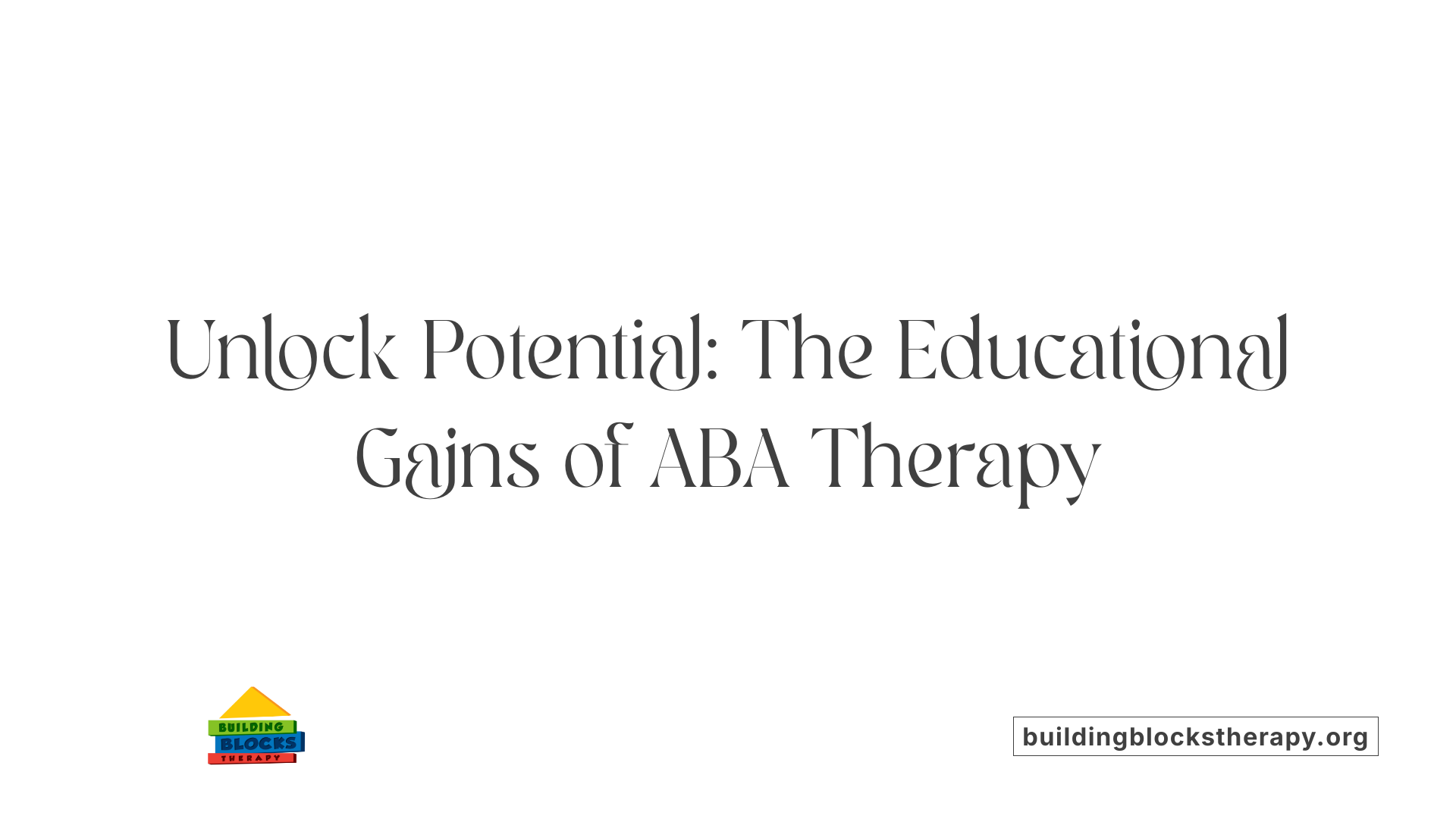
What are the educational benefits of ABA therapy for children with autism?
ABA therapy provides substantial advantages for children with autism, particularly in educational settings. Scientific research supports its effectiveness in improving essential skills such as communication, social interaction, attention span, memory, and academic abilities.
Through targeted interventions, children become better equipped to participate in mainstream classrooms and handle daily routines more independently. Early application of ABA, especially when intensive, has been linked to improved developmental outcomes. This includes enhanced language skills and greater independence in activities like dressing and toileting.
A significant aspect of ABA is its personalized approach, using evidence-based strategies designed to match each child's unique needs. Techniques such as positive reinforcement and visual supports increase motivation and engagement, making learning more effective. It also fosters the development of social skills, such as sharing, turn-taking, and recognizing social cues.
Beyond the classroom, ABA emphasizes teaching self-advocacy and independence—crucial skills for overall success. It involves training parents and caregivers, enabling the reinforcement of learned behaviors across different environments and ensuring consistency.
Overall, ABA therapy not only enhances academic performance but also promotes social skills, behavioral improvements, and independence, setting a strong foundation for lifelong learning and growth.
Supporting Children with Autism in Schools through ABA Therapy
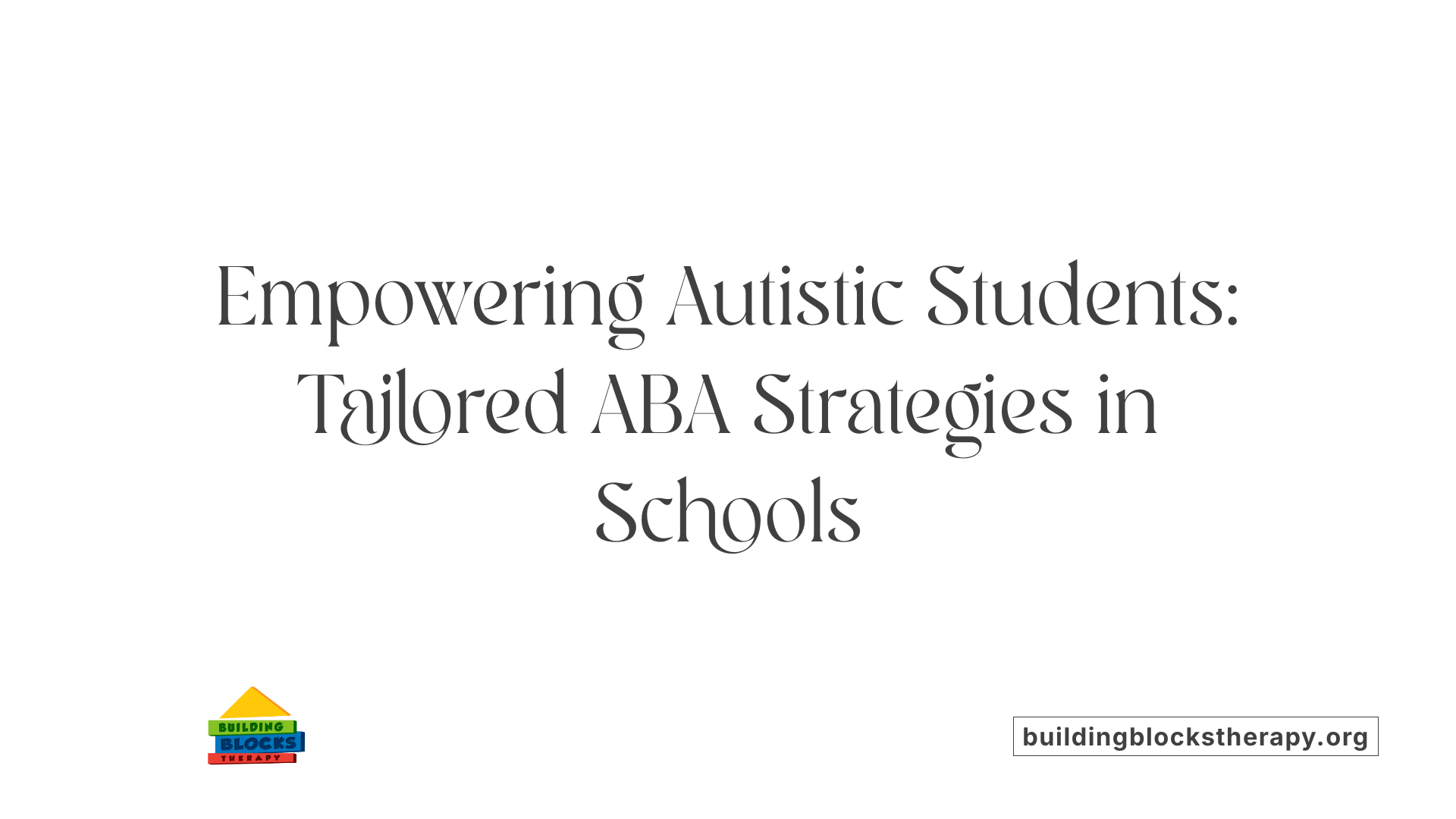
How does ABA therapy support children with autism in school settings?
ABA therapy plays a crucial role in helping children with autism thrive in school environments. It focuses on developing vital social, communication, and academic skills through tailored, research-backed approaches.
Professionals like Board Certified Behavior Analysts (BCBAs) and Registered Behavior Technicians (RBTs) create individualized programs that address each child's unique needs. These programs use evidence-based strategies such as positive reinforcement, which rewards good behaviors, and naturalistic teaching methods, where learning occurs in everyday situations.
This approach helps children transfer skills learned at home into classroom activities, improving their ability to ask questions, sit at a desk, and participate in group work. ABA techniques also support enhanced peer interactions by teaching social cues, turn-taking, and collaborative play.
Challenging behaviors like tantrums or noncompliance are managed through functional behavior assessments (FBAs), which identify their causes. Targeted interventions, including behavior shaping and prompting, assist in reducing disruptive actions and increasing positive behaviors.
Collaboration is key: therapists work closely with teachers and parents to ensure consistent strategy implementation. Data collection during sessions enables ongoing progress monitoring, with program adjustments made as needed.
Overall, ABA therapy in schools aims to create a supportive, inclusive environment where children with autism can develop independence, improve their academic performance, and enhance social participation. This comprehensive approach ensures that children build skills necessary for lifelong success and greater self-sufficiency.
| Aspect of ABA | Techniques Used | Goals & Outcomes |
|---|---|---|
| Social skills | Role-playing, social skills training | Better peer interactions, understanding social cues |
| Communication | Discrete Trial Training (DTT), verbal behavior approaches | Enhanced receptive and expressive language |
| Behavior management | Functional Behavior Assessment (FBA), positive reinforcement, prompting | Reduction in problematic behaviors, increased positive actions |
| Academic skills | Task breakdown, visual supports | Academic progress, readiness, and independence |
| Self help & independence | Self-care routines, prompting | Greater autonomy in classroom routines |
In summary, ABA therapy tailored for school settings supports a child's holistic development, encouraging growth across social, communication, and academic domains, while simultaneously addressing behavioral challenges.
The Role of Therapists in School-Based ABA Implementation
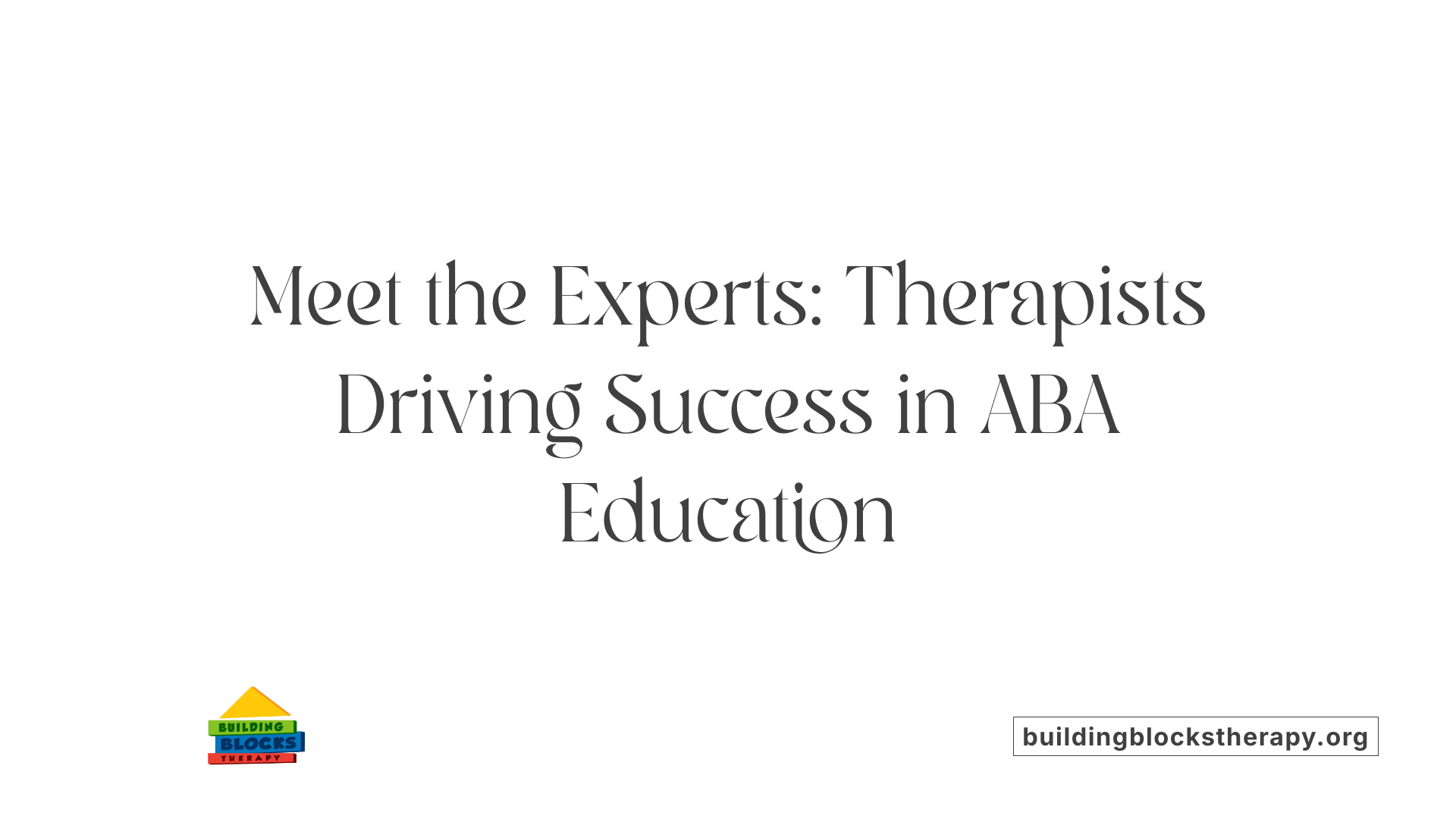
What role do therapists play in implementing ABA therapy in schools?
Therapists such as Registered Behavior Technicians (RBTs) and Board Certified Behavior Analysts (BCBAs) are vital in delivering ABA therapy within educational settings. RBTs often work directly with students, executing individualized behavior intervention plans that promote learning and positive social behaviors.
BCBAs design and oversee these programs, conducting assessments and setting personalized goals tailored to each child's unique needs. They ensure the interventions are aligned with the child's developmental profile and educational objectives.
One of their core responsibilities is to perform Functional Behavior Assessments (FBAs), which help identify the causes of challenging behaviors. Using this information, they develop targeted strategies to reduce harmful behaviors and teach appropriate replacements.
Therapists also play a key role in training school staff and teachers. They provide guidance on ABA techniques such as discrete trial training, naturalistic teaching, and positive reinforcement. This equips educators to implement consistent strategies that support the child's progress across different environments.
Monitoring progress is another critical aspect. Therapists collect detailed data during sessions and classroom activities to evaluate the effectiveness of interventions. Based on these observations, they adjust strategies as needed to maximize a child's development.
Collaboration with parents and caregivers is essential. Therapists communicate regularly about progress, troubleshoot issues, and offer training to reinforce skills at home. This teamwork ensures consistency and fosters comprehensive support for the child's growth.
Overall, therapists in schools serve as a bridge between clinical expertise and educational practice, ensuring that ABA therapy effectively addresses behavioral, social, and academic goals. Their presence promotes an inclusive classroom environment where children with autism can thrive, develop independence, and achieve their full potential.
Impact of ABA on Children’s Learning, Behavior, and Social Skills
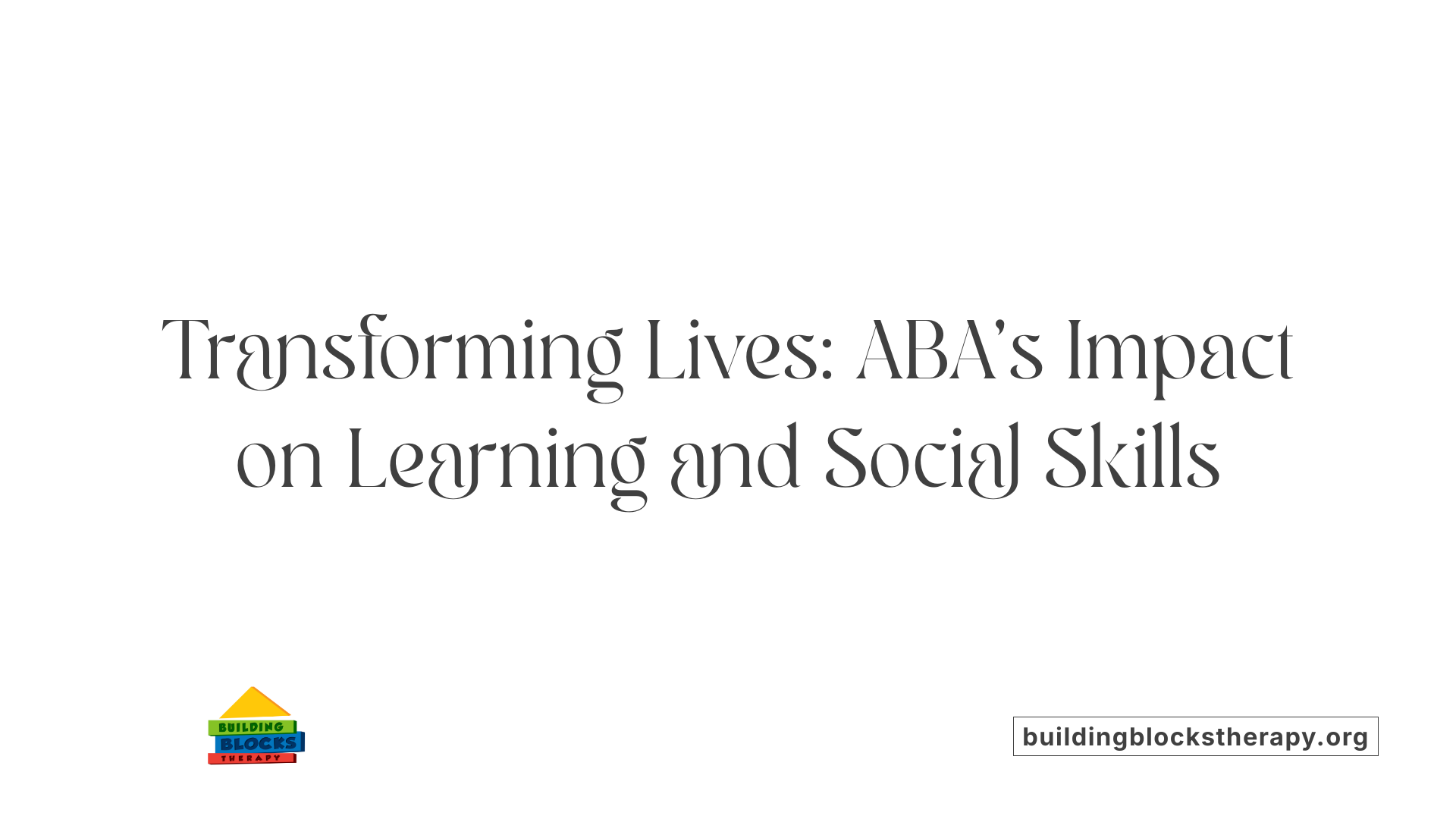 ABA therapy plays a vital role in shaping children's development in school environments. It fosters improvements in social communication, peer interactions, and group skills, which are essential for successful integration in the classroom. By promoting positive behaviors and reducing disruptive actions through functional assessments and targeted interventions, ABA helps create a conducive learning atmosphere.
ABA therapy plays a vital role in shaping children's development in school environments. It fosters improvements in social communication, peer interactions, and group skills, which are essential for successful integration in the classroom. By promoting positive behaviors and reducing disruptive actions through functional assessments and targeted interventions, ABA helps create a conducive learning atmosphere.
In addition to behavioral changes, ABA supports the enhancement of communication skills, self-regulation, and academic abilities. Techniques such as naturalistic teaching and visual supports enable children to develop better understanding and participation in learning activities. These interventions also help children manage emotions and routines, building independence and confidence.
Early implementation of ABA offers significant benefits. Intensive, tailored interventions provided at young ages can lead to marked improvements in language, social skills, and adaptive behaviors. The structured approach encourages skill generalization across different settings, preparing children for more complex social and academic challenges.
Research consistently demonstrates the effectiveness of ABA. Over 20 studies confirm its ability to improve key developmental areas for children with autism. Its scientific foundation ensures that strategies such as positive reinforcement, DTT, and social skills training are evidence-based, leading to meaningful, measurable progress.
This comprehensive approach makes ABA an invaluable tool in fostering young learners' growth, ensuring they develop the skills needed to thrive academically and socially in school.
Empowering Students and Educators for Success
Integrating ABA therapy within school settings is a powerful strategy that benefits children with autism by promoting meaningful learning, social connection, and behavioral improvements. With trained professionals, collaborative efforts among educators, parents, and behavior analysts ensure that interventions are personalized, consistent, and aligned with each child's goals. As research continues to support ABA's effectiveness, schools that embrace these practices create a more inclusive environment where every child has the opportunity to thrive academically, socially, and emotionally.
References
- School-Based ABA Therapy - Surpass Behavioral Health
- How ABA Therapy Can Help In School
- Applied Behavior Analysis (ABA) | Autism Speaks
- Using ABA Therapy in School Settings - Sunbelt Staffing
- How to Advocate for ABA Therapy Services in School Settings
- How ABA Therapy Prepares Children for School Success
- ABA Therapy in Schools: School-Based ABA Services






